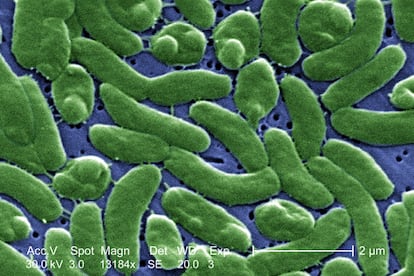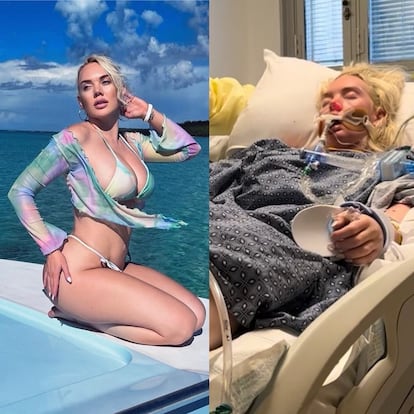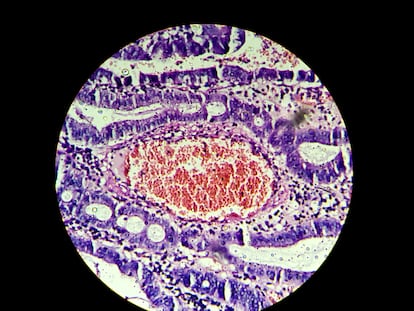US warns of ‘deadly’ bacteria in warming waters near Gulf of Mexico and East Coast
The Centers for Disease Control said that in July and August, the states of Connecticut, New York and North Carolina reported severe and fatal ‘Vibrio vulnificus’ infections

The media has already dubbed it the “flesh-eating” bacterium. Vibrio vulnificus lives in coastal waters, including salt water and brackish water, and U.S. health authorities have warned of its presence in the Gulf of Mexico, the Mexican Caribbean and the U.S. East Coast.
The Centers for Disease Control and Prevention (CDC) has issued a health advisory warning that “many people with V. vulnificus wound infection require intensive care or surgical tissue removal.” Severe cases might require “amputation of the infected limb.”
At least six people have died in the East Coast after being infected, said the CDC. The agency noted that about 150–200 V. vulnificus infections are reported each year and about one in five people with the infection die, “sometimes within 1–2 days of becoming ill.”
The bacterium attracted media attention a few days ago, when the American army veteran and model Jennifer Barlow revealed that she suffered a Vibrio vulnificus infection after a vacation in the Bahamas. The woman shared on her social media accounts that she had just returned to Atlanta from her vacation in January when she began to notice a swelling in her left leg. “It was so swollen — it was at least three times the size of my left knee. It was really scary,” she told Today. She went to the emergency room, where doctors misdiagnosed it as a swollen knee and prescribed rest and crutches.

When Barlow fainted at her brother’s house and was taken to a hospital, doctors took it more seriously and determined she had a Vibrio vulnificus infection. After fearing for her life, they eventually amputated her infected leg.
So-called “superbacteria” have become a cause of high mortality in the world and now kill more people than AIDS, malaria and some cancers. A report published this year in the medical journal The Lancet reveals that infections caused by antibiotic-resistant bacteria kill 1.2 million people a year.
Infections can occur when the bacteria come into contact with open wounds on the skin, but also by eating raw or undercooked shellfish such as oysters. Symptoms include diarrhea, stomach cramping, nausea, vomiting, fever, and chills.
Sign up for our weekly newsletter to get more English-language news coverage from EL PAÍS USA Edition
Tu suscripción se está usando en otro dispositivo
¿Quieres añadir otro usuario a tu suscripción?
Si continúas leyendo en este dispositivo, no se podrá leer en el otro.
FlechaTu suscripción se está usando en otro dispositivo y solo puedes acceder a EL PAÍS desde un dispositivo a la vez.
Si quieres compartir tu cuenta, cambia tu suscripción a la modalidad Premium, así podrás añadir otro usuario. Cada uno accederá con su propia cuenta de email, lo que os permitirá personalizar vuestra experiencia en EL PAÍS.
¿Tienes una suscripción de empresa? Accede aquí para contratar más cuentas.
En el caso de no saber quién está usando tu cuenta, te recomendamos cambiar tu contraseña aquí.
Si decides continuar compartiendo tu cuenta, este mensaje se mostrará en tu dispositivo y en el de la otra persona que está usando tu cuenta de forma indefinida, afectando a tu experiencia de lectura. Puedes consultar aquí los términos y condiciones de la suscripción digital.
More information
Archived In
Últimas noticias
Welcome to the post-religion era: The idea of Christianity as the absolute truth has become obsolete
‘I thought you would like it’: The risky sexual practice popularized by TV shows and TikTok
The digitalization of tourism: ‘They promise experiences and gave us the worst possible one’
Mexican peso defies uncertainty with forecasts of a new period of stability in 2026
Most viewed
- Sinaloa Cartel war is taking its toll on Los Chapitos
- Reinhard Genzel, Nobel laureate in physics: ‘One-minute videos will never give you the truth’
- Oona Chaplin: ‘I told James Cameron that I was living in a treehouse and starting a permaculture project with a friend’
- Why the price of coffee has skyrocketed: from Brazilian plantations to specialty coffee houses
- Silver prices are going crazy: This is what’s fueling the rally










































